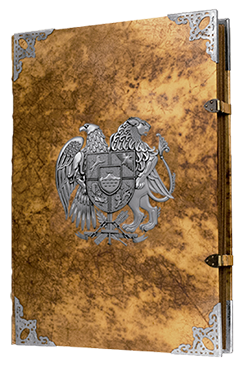Armenia Aeterna obra capital sobre los orígenes y la evolución histórica del que quizá sea el país más antiguo del mundo. Siglos de historia en cuarenta y un documentos imprescindibles que muestran la incansable lucha de los armenios por la supervivencia, en un país cuya cultura es maravillosa a pesar de los constantes ataques y eventos trágicos que ha sufrido.
Armenia Aeterna es el resultado de varios años de investigación y de trabajo de los historiadores Prof. Giusto Traina (Sorbonne Université) y Prof. Aldo Ferrari de la (Ca’ Foscari University of Venice), asistidos por la Dra. Immacolata Eramo (University of Bari ‘Aldo Moro’) y el Dr. Paolo Luca (Ca’ Foscari University of Venice). Fruto de este trabajo es el hallazgo y selección de los cuarenta y un documentos incluidos en esta edición única e irrepetible, limitada a 991 ejemplares numerados y certificados notarialmente más una edición de lujo limitada a 25 ejemplares realizada con metales preciosos.
La investigación se ha realizado en más de veinte archivos ubicados en Armenia, Francia, Italia, URSS, USA, Israel y otros países. Esta obra fundamental nos muestra el recorrido histórico de este país incrustado en los orígenes de la humanidad, una historia marcada por la capacidad de adaptación de sus habitantes a un medio hostil y difícil, al tener que luchar constantemente con estados vecinos de una fuerza política abrumadora, sin nunca renunciar a su independencia política, religiosa y administrativa.



Valoraciones
No hay valoraciones aún.